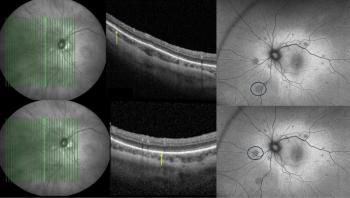
The impact of fungal endophthalmitis
A great variety of fungal agents may cause endophthalmitis, and accurate diagnosis is essential for effective treatment, according to a study published in the November/December 2008 issue of Retina.
A great variety of fungal agents may cause endophthalmitis, and accurate diagnosis is essential for effective treatment, according to a study published in the November/December 2008 issue of Retina.
Arunaloke Chakrabarti, MD of the Department of Medical Microbiology, Postgraduate Institute of Medical Education and Research, Chandigarh, India and colleagues conducted a retrospective review of all cases (n=113) of fungal endophthalmitis diagnosed in a single tertiary care centre between January 1992 and December 2005.
The researchers found that fungal endophthalmitis developed for the following reasons: after cataract surgery (n=53), after trauma (n=48) or endogenous (n=12). The fungi causing the infections were identified as: aspergillus, 54.4% (of which, Aspergillus flavus accounted for 24.6%); yeasts, 24.6% (of which, Candida tropicalis accounted for 8.8%); melanized fungi, 10.5%; other isolated fungal agents, including Fonsecaea pedrosoi, Pseudallescheria boydii and Trichosporon cutaneum. Patients were treated with pars plana vitrectomy, intravitreal amphotericin B 5 µg and dexamethasone 400 µg, and, in some cases, oral fluconazole (n=27) or itraconazole (n=78). Treatment outcomes were unfavourable for 77.4% of patients infected with aspergillus; for 64.3% of patients infected with yeasts; for 50.0% of patients infected with melanized fungi; for 16.7% of patients infected with mycelial fungi; for 52.8% of patients whose endophthalmitis developed following cataract surgery; for 66.7% of patients who developed endophthalmitis following trauma, and for 33.3% of patients with endogenous endophthalmitis.
From these data, Dr Chakrabarti and colleagues concluded that, although aspergillus is the most common cause of fungal endophthalmitis, there are many other fungal agents that may cause this disease. The team considered that diagnosing endophthalmitis as fungal in origin presents a significant challenge to doctors.
Newsletter
Get the essential updates shaping the future of pharma manufacturing and compliance—subscribe today to Pharmaceutical Technology and never miss a breakthrough.













































